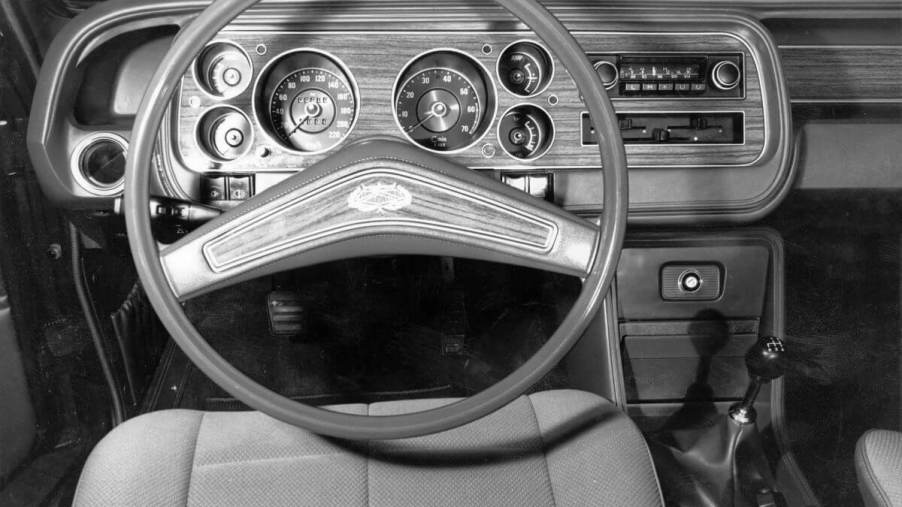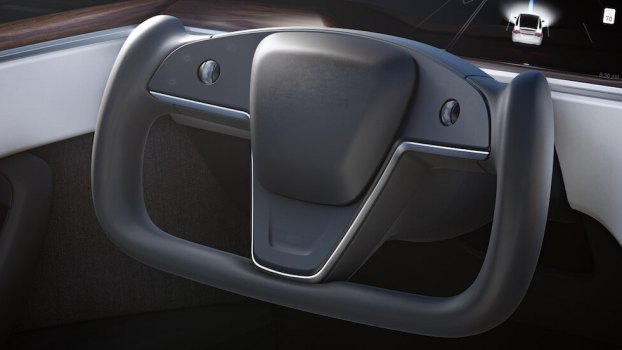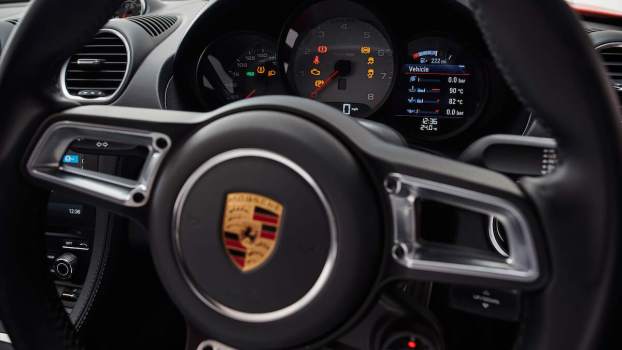
Ford’s Laughably Unsafe Steering Wheel Makes the Tesla Yoke Look Good
Automotive companies constantly look to innovate and find features that will separate them from the competition. Sometimes, this even means attempts to throw out a perfectly good system, a traditional round steering wheel, for something altogether new. Telsa is the latest manufacturer to produce an unconventional means to steer a car with its yoke steering control. The company announced in 2021 that the Model S and Model X would be turned exclusively by its yoke “wheel,” but later backpedaled on the idea of offering a traditional, round steering wheel or the yoke.
A full six decades earlier, Ford made effectively the same mistake by developing an unconventional way for drivers to turn a car’s wheels. However, unlike Tesla’s yoke, Ford’s steering device (thankfully) never saw its way into production.
Ford’s ‘wrist-twist’ turning mechanism
In the mid-1960s, the Ford Motor Company looked beyond the automotive landscape for the next “big thing” in cars. It turned to Robert J. Rumpf, who helped design the U.S. national missile defense system, to study automobile steering control systems “as if you were a man from another planet, and then design something better,” according to the New York Times.
Rumpf did just that, creating a way of controlling a car that was out of this world — Ford’s wrist-twist” control developed and tested for Mercury (the car brand, not the planet, that is).
The wrist-twist system replaced a round steering wheel with a pair of 5-inch twistable dials extending from a traditional-looking steering column that were locked together to turn in unison. The Ford Motor Company claimed the wrist-twist system was less bulky than a traditional wheel, making the interior more spacious.
The company touted the wrist-twist system in a 1965 promo film. The narrator states the system uses additional armrests for ease of use “since only a light touch” was required to turn the dials, and the controls improved the visibility of the gauge cluster and beyond the interior. The promo film, with unabashed sexism of the era, also claimed women would find it easier to park since “most women would agree parking is the most taxing part of driving.”
In real-world use, the wrist-twist system was still wholly unconventional and unfamiliar, according to a test performed by Popular Mechanics in April 1965. The article’s author said each turn of the dials was met with a jerk, and the car “felt like a kangaroo with hiccups.” He also noted that during full-lock steering, “I ran out of power boost…a steering wheel makes the situation easier to handle.”
After getting used to the system, the tester actually came to appreciate its quirkiness. Still, the wrist-twist system didn’t turn out (ba-dum tiss) to be worthy of inclusion in any production models.
The traditional steering wheel is best, despite other attempts to reimagine it
Ford and Tesla aren’t the only automakers who have tried to reinvent the (steering) wheel.
Just a few years before the wrist-twist system was being tested, the Chevrolet Corvair Testudo concept car previewed a steering control design that has lived on well into 2023 — the flat-bottom steering wheel. However, the Corvair concept also had a flat-topped steering wheel, making the “wheel” more of a square. Perhaps the C8 Corvette’s engineers took some inspiration from the 1963 concept to develop the shape of the modern ‘Vette’s steering control.
The Maserati Boomerang, which later became the inspiration for the Bora, had a four-spoke steering wheel design, but inside the “hub” was the gauge cluster. The wheel was also placed so closely to the dials that it was troublesome to get a grip on it.
The 1985 Mazda MX-03 concept features a commercial airliner-type yoke, while a year later, the Oldsmobile Incas had a yoke that appeared to be lifted from a fighter jet.
More recently, the BMW Z22 concept from 1999 featured a squared-off “wheel” with controls to zoom in and out of the rearview display. The concept also features a head-up display and a fingerprint scanner, so this concept did predict some of the next innovative features in cars.
While none of these concepts ever made it into production, some unconventional steering wheels did. For instance, the Spyker C8 Spyder is fitted with a four-spoke wheel that takes its design inspiration from an airplane propeller. The Pagani Zonda R housed the tachometer in the middle of the hub. These certainly aren’t as strange as Ford’s wrist-twist system, showcasing that when it comes to turning the wheels, a steering wheel is a control that doesn’t really need improvement.





